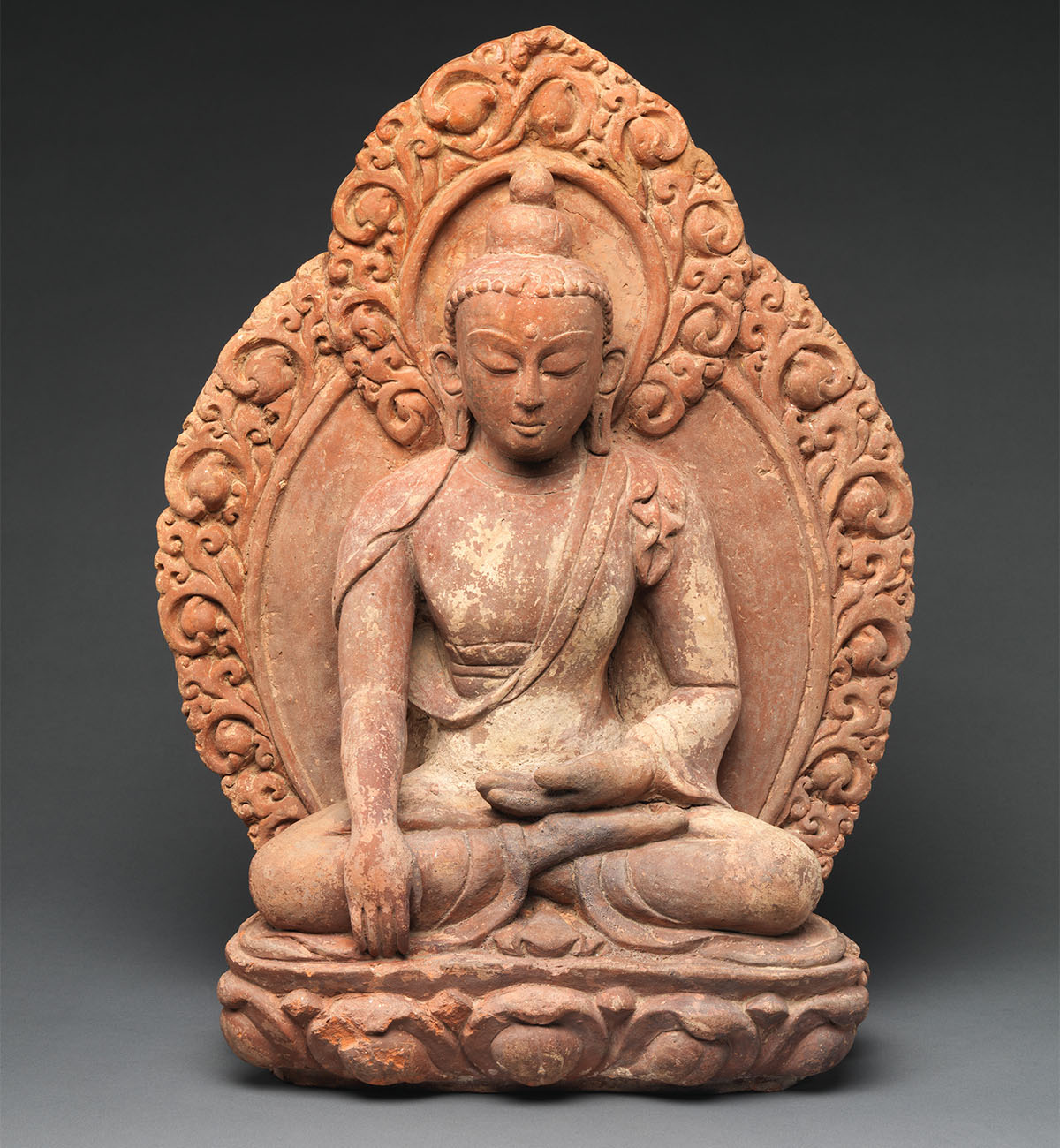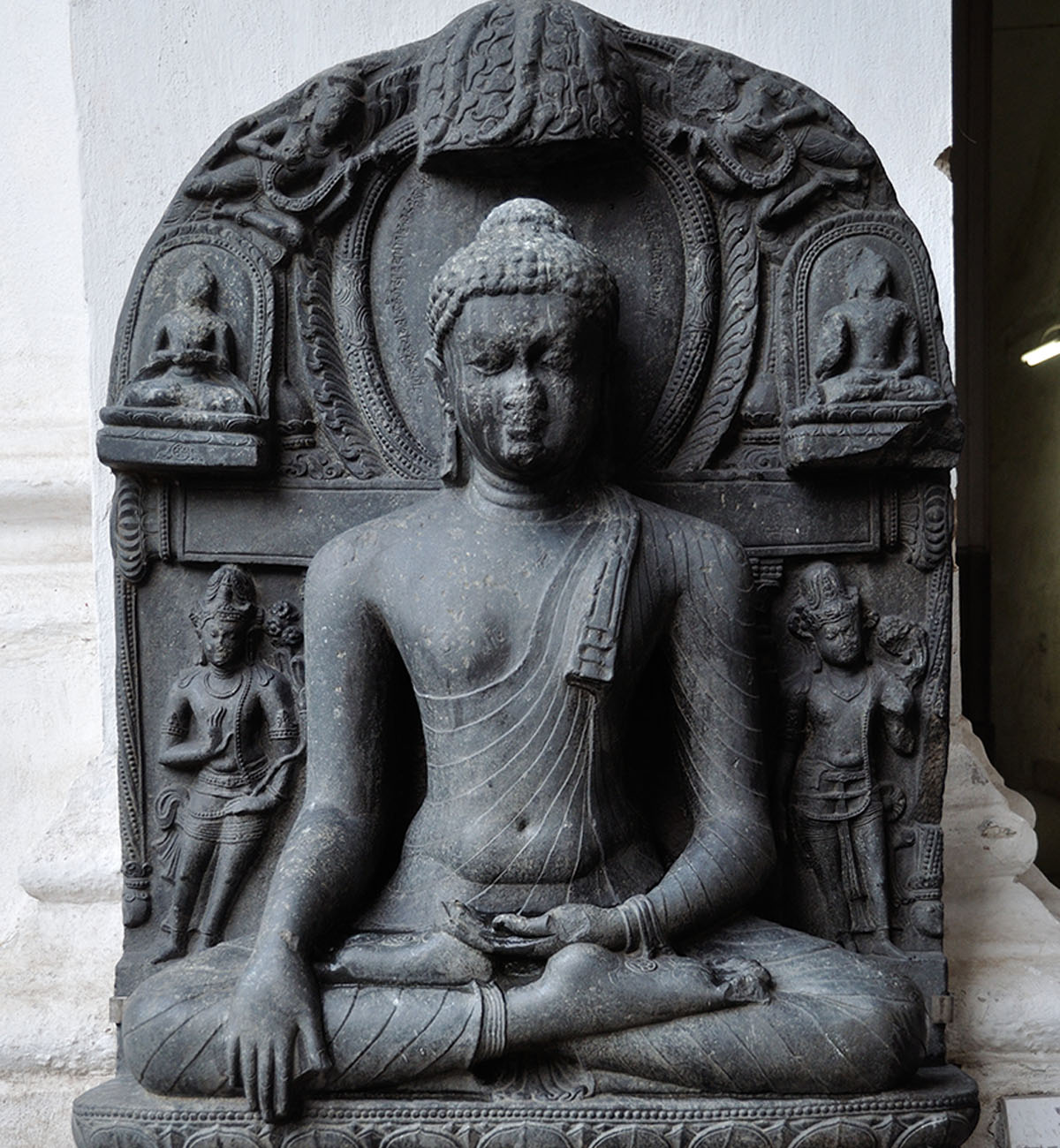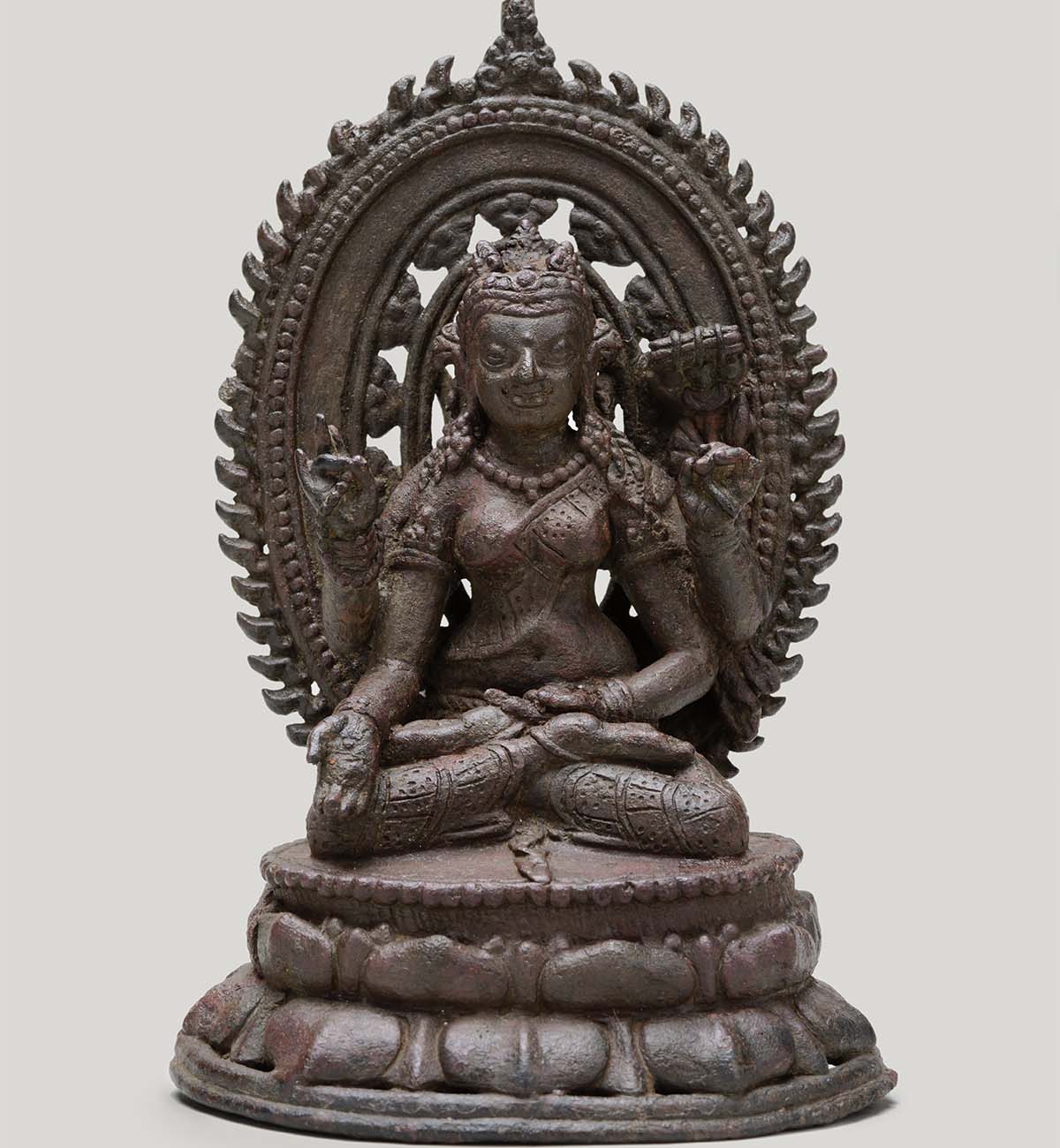ARTICLE
Bhumisparsha Mudra
A symbolic gesture in Buddhist iconography and practice – and one of five common mudras in Buddhist art – the bhumisparsha mudra symbolises the moment of inception of the Buddha, when the prince Siddhartha attained enlightenment under the pipal tree. Literally translated to “earth touching mudra,” it is also often referred to as the “earth witness” and is usually associated with the Dhyani-Buddha Akshobhya.
The figure depicting the mudra is always shown in the seated position, with the right hand reaching over the knee so that all five fingers extend downwards to touch the earth. Representing unshakability, the bhumisparsha mudra is symbolic of the triumph of the spirit over matter and its liberation from worldly trappings. The gesture is believed to be an invocation of the earth goddess, who witnessed the Buddha’s ascendance to the state of enlightenment. When this gesture of the right hand is combined with the placement of the upturned left hand on the lap, in the dhyana mudra, is thought to signify the union of skillful means, or upaya, and wisdom, or prajna.
The mudra is also thought to proclaim the defeat of temptation and evil intention, personified by the demon king Mara, and challenge his supremacy. The defeat of Mara is an important episode in Buddhist art canon and is a popular narrative. According to the story, Mara tried to frighten and distract Siddhartha with armies of demons and the seductions of his daughters. Claiming the throne of enlightenment for himself, Mara produced his army as witnesses to this claim. In response, Siddhartha reached out and touched the ground in a gesture that declared the earth as his witness. The moral triumph over evil is also therefore built into the symbolism of the mudra.
Some traditions hold that the bhumisparsha mudra was used by Akshobhya to transform the delusion of anger into the mirror of wisdom. This signification is borne out in Buddhist teachings, in which a mastery over one’s senses and emotions is often emphasised as a means to achieve true awakening. The bhumisparsha mudra is an important mudra, as it refers to the very moment of achievement of buddhahood.
Bibliography
Our website is currently undergoing maintenance and re-design, due to which we have had to take down some of our bibliographies. While these will be re-published shortly, you can request references for specific articles by writing to hellomapacademy@map-india.org.









